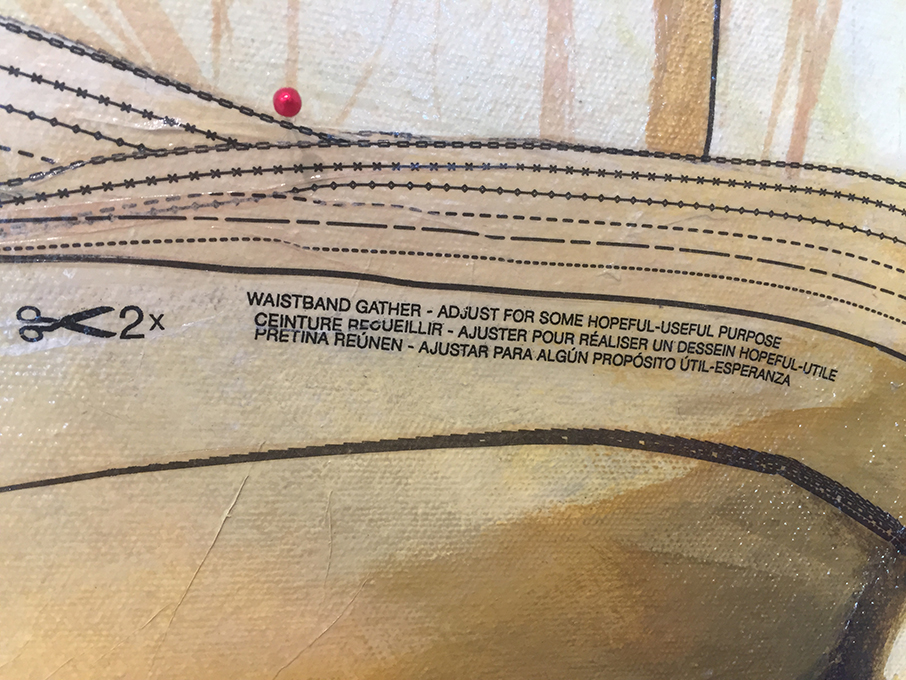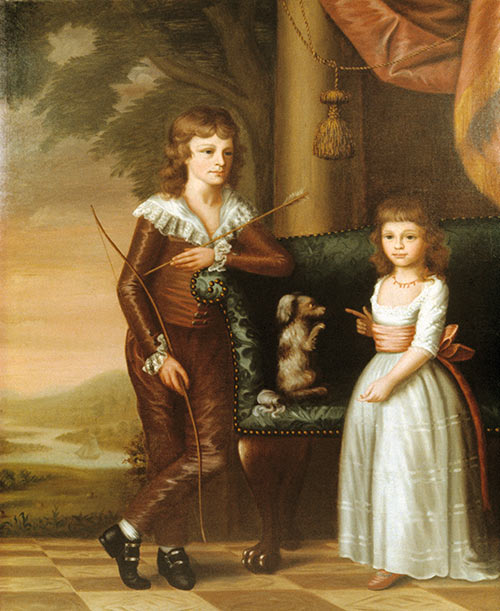I’ve always been drawn to the small details of works of art. Maybe it’s my own lack of dexterity when it comes to focusing on intricate details, but I find I admire artists who are dedicated to producing work that is labor intensive. If I really take a moment to grasp at how much time goes into completing visually intricate works, I find I admire artists whose work is aesthetically complex and full of rich details.
It comes as no surprise then that one of my favorite things about working at the Gibbes is the daily opportunities to glimpse new details of a work of art I may have previously missed! Take Wave Upon Wave by contemporary artist John Westmark who’s paintings depict strong courageous women, some portrayed as stoic martyrs and others as warriors engaged in conflicts of rebellion. Viewed from a distance, Westmark has depicted several female forms locked in a struggle to free themselves from the dark shadows at the bottom of the canvas. Their featureless faces appear wrapped in cloth and give no suggestion of individuality. Something draws me closer to this work though.
For this piece, Westmark incorporated paper sewing patterns into his composition which gives the flat canvas a three-dimensional aspect even from a distance. Upon closer inspection, one sees Westmark has intentionally exposed the pattern directions and has juxtaposed the rigid numerical instructions with his own commentary. On one figure, he has edited the waistband sewing instructions to read “Waistband gather – adjust for some hopeful-useful purpose.” I remember when the Gibbes featured an exhibition of Westmark’s work in 2014, it took me longer than I’d like to admit for me to realize these subtle messages the artist weaved into each piece. This realization forced me to slow down and examine each work closely. No longer just figures on the canvas, these small lines of text added to my interpretation of the piece and I eagerly sought out new details I may have missed.

Another work in the Gibbes collection worth a closer look is William and Eliza Charlotte (Mrs. Edward Brailsford) Moultrie by an unknown artist, completed around 1792. The grandchildren of Revolutionary war hero General William Moultrie, little else is known of the history of the children depicted in the portrait. Young Eliza Charlotte stands to the right of the canvas in front of a green couch on which a small dog on its hind legs appears to stretch its paws out to meet her finger. William holds a bow and arrow and stands on the opposite side of the couch.

Although I pass by this painting on a daily basis, I just recently began to appreciate the background details the artist has posed the children in front of. In the back left portion of the composition, a ship sails down a winding river with mountains in the distance, an idyllic scene that the viewer could miss looking at the figures of the children in the foreground. The interior space the children occupy seems to open to this beautiful landscape connecting the figures and their surroundings. I find that my eye is drawn to this area now whenever I pass by the painting.
This new appreciation has made me more aware of my surroundings when I’m walking through the galleries. Each day, I try to make a point of slowing down as I move from one task to the next. Each work is an opportunity to learn something new, or to be reminded of something I may have forgotten. Next time you visit the Gibbes or another museum, slow down and draw closer to a piece that may catch your attention. You never know what you might discover!
—Amanda Breen, curatorial assistant, Gibbes Museum of Art
Published April 20, 2017

